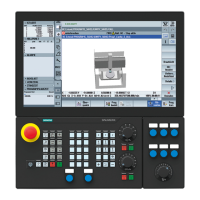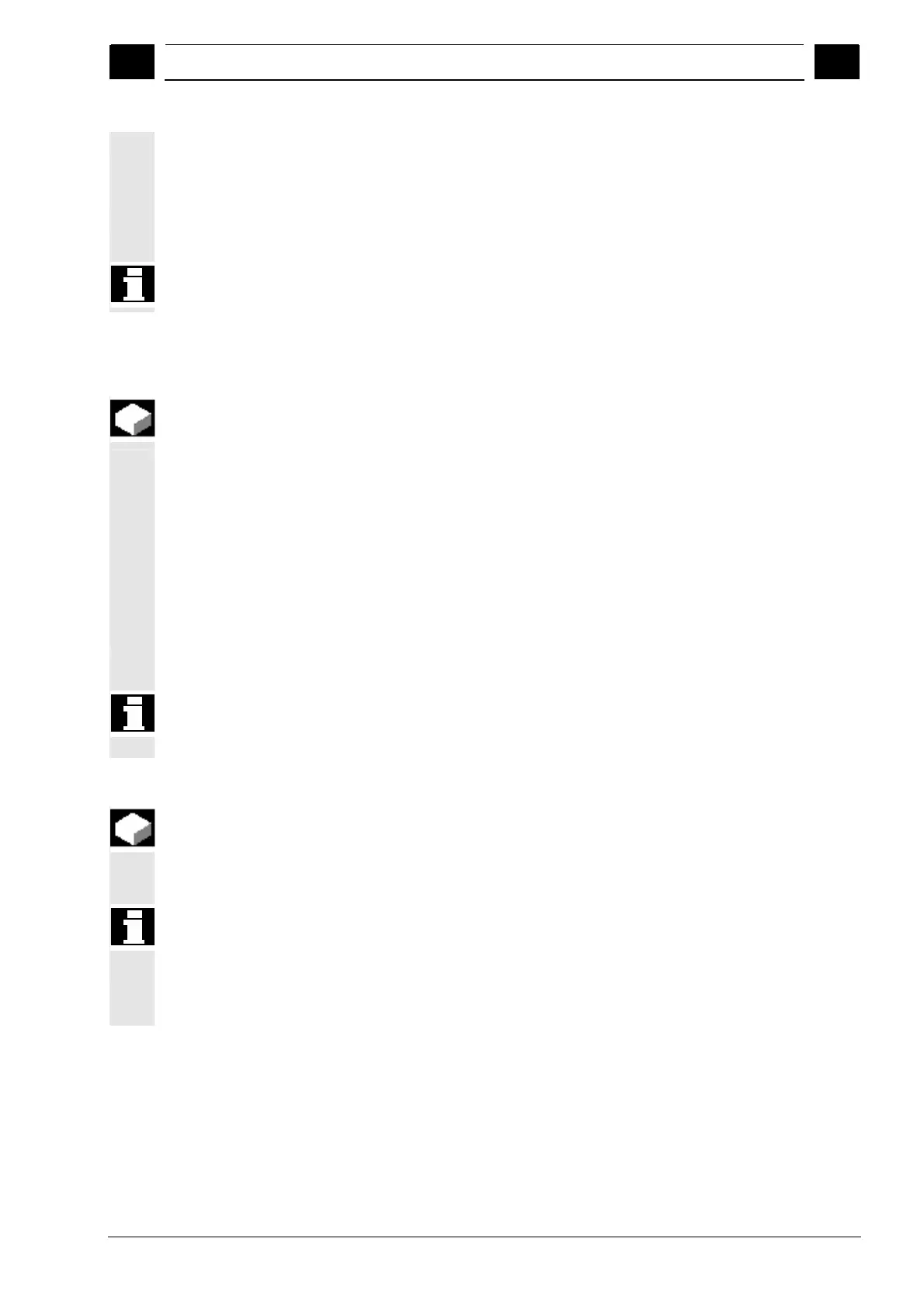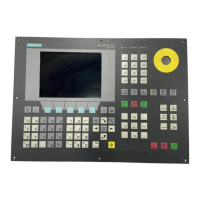6
08/2005 Working with Manual Machine
6.5 Simulation
6
♥ Siemens AG, 2005. All rights reserved
SINUMERIK 840D sl Operation/Programming ShopTurn (BAT) – 08/2005 Edition 6-341
Reworking threads
You can rework existing threads, when repairing previously cut
threads for example or as the result of changes that arise from re-
measuring (see Sec. "Reworking Threads").
If you want to rework some threads, input the initial plunge depth E
(inc.). This is the depth that was reached during a previous machining.
By inputting the plunge depth, you avoid unnecessary idle cuts when
reworking the threads.
6.4.3 Milling with manual machine
For milling simple geometric shapes, the following functions are
available to you just as under Automatic:
Rectangular pocket
Circular pocket
Rectangular spigot
Circular spigot
Longitudinal slot
Circumferential slot
Multi-cornered
Engraving
The parameters of the input screen forms correspond to the
parameters under Automatic (see Sec. "Milling").
Machining can only be performed at individual positions. To define the
position, input the parameters X0 and Y0 (face machining) or Y0 and
Z0 (peripheral surface machining).
6.5 Simulation
For more complex machining processes, you can check the result of
your inputs with the aid of the simulation, without having to traverse
the axes (see Sec. "Simulating Machining"). The execution of the work
steps is graphically displayed on the screen during this.
In "Manual" mode, you can simulate a work step with an already
opened and filled out parameter screen form.
Setting up a blank shape
For the graphical display, a pre-defined blank shape is used. You can
modify the blank as you like (such as for a G-code program) (see Sec.
"Changing the blank shape for a G-code program").

